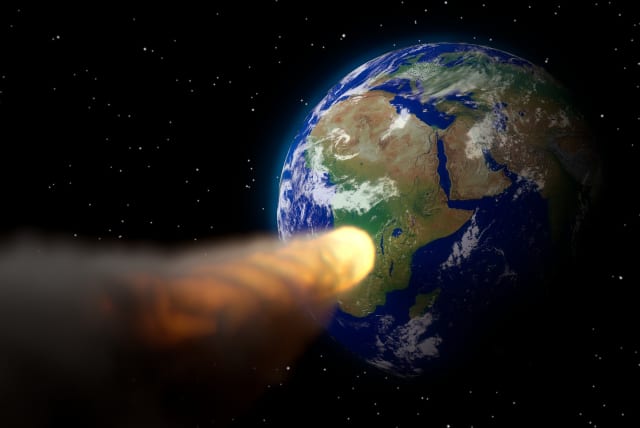How can we defend Earth against asteroids? This scientist has an idea

The traditional approach to this hypothetical scenario is to deflect the orbit of the incoming threat, but a scientist recently proposed an innovative approach.
In the future, shooting hails of small projectiles could take out asteroids threatening the Earth, while using the atmosphere as a shield to burn up the asteroid fragments.
Philip Lubin, a professor at the University of California in Santa Barbara describes this proposed innovative method of planetary defense in an article published on NASA's website.
What is the innovative plan?
In the case of an object flying towards Earth and threatening the planet, Lubin proposes breaking the object up into smaller pieces, which would then be destroyed by the atmosphere.
Until now, the traditional approach to this hypothetical scenario is to deflect the orbit of the incoming threat, so as to make it miss the Earth completely.
But Lubin's idea would create an effective method that allows for short mitigation time scales using existing technologies.
If the intercept is carried out relatively early in the threatening object's flightpath, or with sufficient energy, the object's fragment can even disperse widely enough that they miss Earth completely and don't require the atmosphere as a shield.
When the intercept is carried out without enough warning time, the fragments will enter the atmosphere - but since they're so small, they'll just airburst high above the surface or even burn up in the atmosphere's friction.
In this scenario, there would be no danger for life or objects on Earth.
Asteroids threatening Earth
NASA tested a method for planetary defense in October 2022. It successfully sent a spacecraft toward an asteroid that was millions of miles away from Earth and shifted its orbit. NASA hopes that they will be able to use this method against any asteroid or comet that poses a real threat to Earth.
Some 26,115 asteroids have skimmed past Earth since 1990, NASA's Center for Near Earth Object Studies said in 2021. Out of those, 888 had a diameter of more than a kilometer, making them two and a half times taller than New York's Empire State Building.
Smaller asteroids strike the Earth almost all the time. However, due to the smaller scale of those asteroids, they get burnt up in the atmosphere, so many of them don't even reach the Earth's surface, and rendering the impact of the rest null and void.
Jerusalem Post Store
`; document.getElementById("linkPremium").innerHTML = cont; var divWithLink = document.getElementById("premium-link"); if (divWithLink !== null && divWithLink !== 'undefined') { divWithLink.style.border = "solid 1px #cb0f3e"; divWithLink.style.textAlign = "center"; divWithLink.style.marginBottom = "15px"; divWithLink.style.marginTop = "15px"; divWithLink.style.width = "100%"; divWithLink.style.backgroundColor = "#122952"; divWithLink.style.color = "#ffffff"; divWithLink.style.lineHeight = "1.5"; } } (function (v, i) { });

